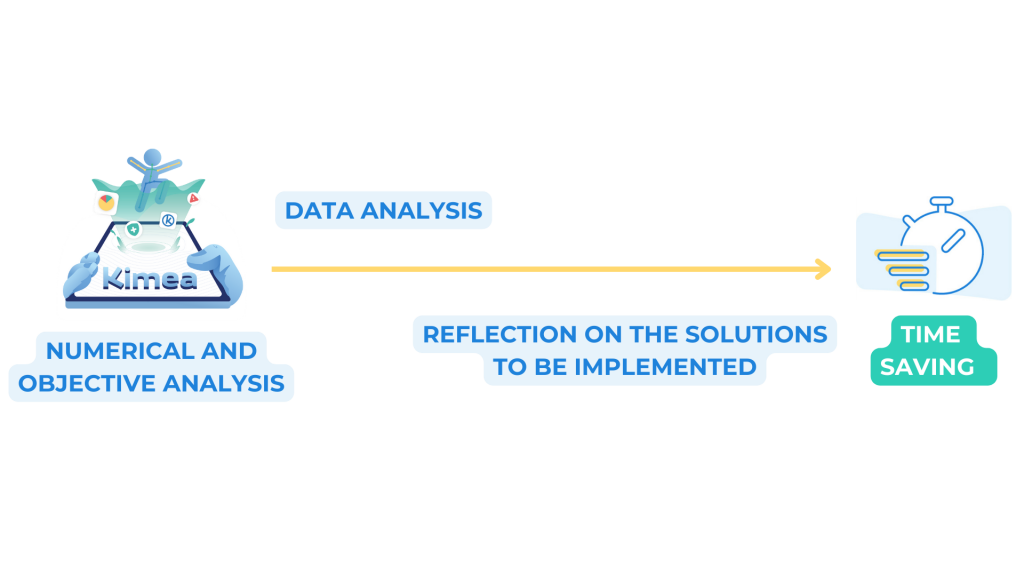MSDs in the Food Industry: A Fatalistic Outlook?
When discussing musculoskeletal disorders in the food industry, we often mention the staggering figures that affect this sector. Indeed, for many years, the food industry has been one of the sectors most impacted by these occupational diseases. Sometimes, it even seems like there’s a sense of resignation, as if MSDs were just a matter of “when” rather than “maybe.”
At Moovency, we firmly believe that this fatalistic mindset is not the answer. On the contrary, we are convinced that through prevention and ergonomics, these figures will decrease, and the health of employees will be preserved. Let’s explain.
What are the consequences of MSDs in the food industry?
A LARGE NUMBER OF SUFFERING WORKERS
Today, more than 356,000 employees work in the food industry, and over the years, their population has aged. Indeed, the ratio of young employees to seniors has dwindled, as in 2015 there were only 0.6 young workers under 30 for every worker over 50 (compared to 1.6 in 2005).
However, even though workplace accidents are still too common among the younger population of employees, it’s seniors who more frequently suffer from MSDs. Therefore, there are significant risks that workers in this industry will experience these occupational diseases.
To date, there are no fewer than 11 recognized occupational diseases per million hours worked by employees in the food industry, as acknowledged by Social Security. In contrast, other sectors have 4 recognized diseases per million hours worked.
The figures related to recognized musculoskeletal disorders in the food industry are unequivocal: a quarter of recognized MSDs as occupational diseases stem from this sector. And from these MSDs arise well-known ailments:
- pain (15% of MSDs in the food industry are related to back pain);
- reduced motor abilities;
- disabilities; and sometimes
- even professional disinsertion.
A SIGNIFICANT FINANCIAL IMPACT
Beyond the human aspect, MSDs also represent a financial cost for food industry businesses.
Indeed, the annual cost of MSDs for companies in the food industry now amounts to over 77 million euros, with more than 15% attributed to back problems. It’s estimated that more than 930,000 workdays are lost due to MSDs for companies in the sector.
millions euros
workdays lost
Multiple Factors with Singular Consequences
Numerous factors contribute to the onset of MSDs among food industry employees.
REPETITIVE TASKS
All actions involving the rapid, successive, and rhythmic execution of movements, often soliciting the upper limbs of workers, can promote the onset of MSDs. They are indeed recognized by French legislation as a factor of work-related hardship.
HEAVY LIFTING
Handling heavy loads is also crucial. Transporting agricultural and food goods throughout the day can quickly become a strain on the human body. Arms, legs, back, feet… everything is in motion simultaneously, which can lead to fatigue and requires significant physical fitness.
EXPOSURE TO VIBRATIONS
Like in many other sectors, the food industry involves the use of machinery that can generate high levels of vibration. Whether transmitted through the hand or throughout the body, these exposures have serious consequences
Hand-Transmitted Vibrations
They can cause diseases affecting blood circulation, as well as nerves, bones, joints, muscles, and tissues of the hand and arm.
Whole-Body Vibrations
These pains primarily affect the spine of employees. Additionally, if manual handling is involved, the risks are exacerbated.
In general, exposure to vibrations can also degrade workers’ dexterity, weaken their manual strength, cause pain, and lead to early onset arthritis, among other issues.
WORKING IN COLD CONDITIONS
Essential in many areas of the food industry, working in cold conditions is, however, a factor that increases the risks of MSDs (Musculoskeletal Disorders). By exposing employees to very low temperatures, the specific working conditions of cold work force the body to adapt to compensate for the loss of heat.
Numerous studies have indeed demonstrated tangible links between the onset of MSDs and work situations exposing employees to cold.
PSYCHOSOCIAL FACTORS
Beyond physical factors, it’s important not to overlook the psychological aspects of workers. Work monotony, lack of autonomy in their actions, time pressure: these factors generate a deterioration in the relationship with work… which favors the onset of musculoskeletal disorders.
LACK OF INTEGRATION OF OCCUPATIONAL RISKS IN THE DESIGN OF JOBS AND WORKPLACES
Finally, many companies in the agri-food sector unfortunately have not integrated occupational risks enough into the design of their workstations.
However, it is essential to act at the primary level of prevention to minimize MSDs as much as possible. This is why our ergonomists are certified and bring real professional expertise to our clients. By analyzing workstations as early as possible, they play a key role in supporting companies concerned with the well-being and health of their employees through change.
How to Prevent MSDs in the Agri-food Sector?
Detecting MSDs, yes… But how to prevent them? One company, Groupe EVS, reveals the actions it has implemented to prevent MSDs among its workforce.
BIOMECHANICS AS THE STARTING POINT
At Groupe EVS, a player in the meat sector, preventing MSDs has also been a priority for over seven years. Indeed, several biomechanical risk factors favored the onset of numerous MSDs among their workforce:
- Repetitive tasks, especially during meat cutting, deboning, meat trimming, or packaging;
- Working in cold conditions (between 4 and 6 degrees Celsius);
- Or strenuous movements, due to the nature of their activity. At Groupe EVS, we find operators in the second stage of meat processing. Each employee can have a specific position depending on their training (deboning, trimming, portioning, packaging).
To address this issue, Groupe EVS has joined the TMS Pros program and has implemented numerous actions to combat the leading occupational disease in France.
That’s why Groupe EVS aims to map out all of its positions over the coming years using the KIMEA solution. The company will be able to make progress on the issue of job hardship, even clearly seeing the work cycles of their operators and accurately counting their movements. This way, they’ll be able to provide better task versatility for employees.
The quantitative and objective analysisprovided by KIMEA willoffersignificant time savings to Groupe EVS and allow the company to fully engage in data analysis and brainstorming around the solutions to be implemented.


MULTIPLE SOLUTIONS FOR TANGIBLE BENEFITS
The safety department of Groupe EVS regularly visits different sites to present their approach. They explain why warm-ups are necessary, why drinking water regularly is good for health, and more.
Moreover, Groupe EVS also emphasizes the support for new operators, as every newcomer is trained in workplace safety.
Through this approach, Groupe EVS places the operator at the heart of its TMS prevention policy and commits to a long-term strategy where everyone can play a role in their working conditions.
We can observe significant progress today, as the company records fewer occupational diseases. However, the work is not done. TMS still exist, and the incidence rates vary between each site.
EMPLOYEE VOICE LIBERATION AT GROUPE EVS
Following the KIMEA data analysis, taskforces can be established, comprising industry experts including line workers, members of the health, safety, and working conditions committee (CSSCT), safety personnel, and client representatives. These individuals bring decades of experience and expertise to better prevent TMS.
In summary…
Yes, the agri-food sector is heavily impacted by France’s primary occupational disease: TMS. The numbers speak for themselves.
Repetitive tasks, heavy lifting, exposure to vibrations, cold working conditions, psychosocial risks… Many factors can lead operators to develop TMS.
So… Can we say that TMS in the agri-food industry are inevitable? No. Not just for the agri-food sector, but for any sector. No industry, no profession, should be synonymous with musculoskeletal disorders. Because solutions exist. And concrete actions can be taken to prevent this risk.
By focusing on biomechanics as the starting point, agri-food structures can map out their positions and identify the most demanding ones. It will then be easier to prioritize prevention actions and find the most suitable solutions for the issues related to different positions.
Need assistance? We can help.
Our certified ergonomists (IPRP) are here for you. Experts in TMS prevention and biomechanics, they can use KIMEA to determine where musculoskeletal disorders are occurring within your organization. Their ergonomic analysis will provide you with the understanding to act directly at the source… With concrete solutions.
